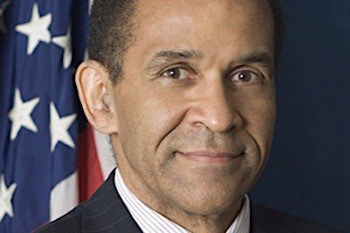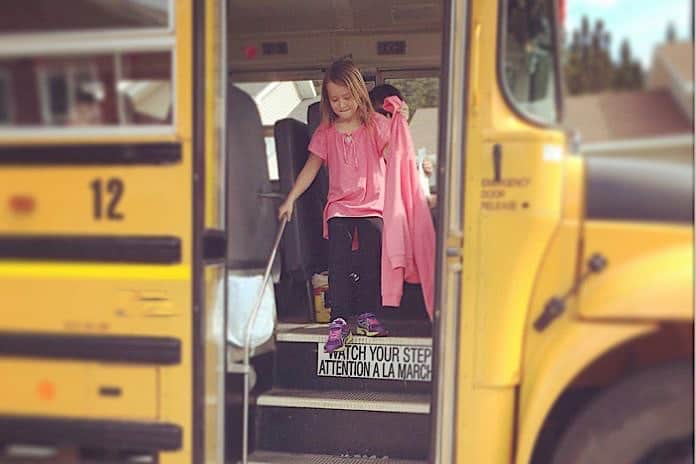 NAPT Summit attendees heard from Christopher Hart, vice chairman of the National Transportation Safety Board, when he delivered the keynote address Oct. 22. Before the conference, Hart spoke with School Transportation News about the specific challenges facing the student transportation industry.
NAPT Summit attendees heard from Christopher Hart, vice chairman of the National Transportation Safety Board, when he delivered the keynote address Oct. 22. Before the conference, Hart spoke with School Transportation News about the specific challenges facing the student transportation industry.
STN: What top safety challenges are currently facing student transportation?
Hart: Speaking for myself, but not for the whole board, there are a number of challenges. One of the major challenges for student transportation is its image. Those of us in the industry know that school transportation is one of the safest modes of transportation. But when accidents occur, they always attract heightened media attention because they involve children, and sometimes that media attention undermines the public’s confidence. The school bus industry is generally very sensitive and responsive in implementing safety improvements – they do it with very limited budgets, but they need to make sure the public is educated about their stellar safety record so as to maintain that public confidence.
STN: How far do state or federal laws go in increasing school bus safety?
Hart: State and federal laws are important in terms of setting standards and promoting new technology or best practices, and the board has frequently made recommendations to NHTSA, FMCSA, state and local governments, and industry. Over the years the board’s recommendations have resulted in safety improvements in school bus vehicle design, vehicle maintenance, occupant protection, emergency egress and driver training. It takes a village to raise children and it takes a village to keep them safe. So, all of these organizations are important and good laws are just one component.
STN: Do any specific examples come to mind?
Hart: In terms of state and federal laws, certainly standards to increase the crashworthiness of school buses have been very helpful, and the proof is the extremely low number of school bus occupant fatalities per year. Still, the board sees accidents that involve side collisions and rollovers where compartmentalization has its limitations. Quite frankly, the board believes the glass is only half full on NHTSA’s rulemaking regarding lap-shoulder belts on school buses. We wish they had done more. The board also believes states could do more to combat distracted driving, because, even if school bus drivers refrain from using their cellphones — which I sincerely hope they do — other distracted drivers can cause accidents involving school buses with catastrophic results.
STN: What lessons can be learned from the Gray Summit, Mo., crash investigation?
Hart: First, I would recommend everyone read the report, because it is purposely written in a style that is accessible to lay readers. It is available on our website by searching the accident investigations section at www.NTSB.gov. That accident demonstrates the importance of thorough investigating because you never know what you will find. In this case, a thorough investigation not only discovered the use of a cellphone that initiated the sequence of tragic events, but it also uncovered brake maintenance and inspection issues, and emergency egress issues that were not directly causal in this accident, but pose a significant safety risk nonetheless.
STN: What is the board’s stance on new vehicle collision prevention technology for school buses, transit and motorcoach?
Hart: The Safety Board has recommended collision avoidance technology for commercial vehicles, including school buses, since 1995. In fact, we just reiterated some of those recommendations in our latest school bus accident report in Gray Summit, Mo. The board believes technologies such as collision warning systems, adaptive cruise control and active braking help compensate for some of the basic human frailties that contribute to accidents. One of the reasons the board made these recommendations for all commercial vehicles is because they would not only help school buses avoid collisions but would also help prevent trucks or other vehicles from striking school buses.
STN: What about cost considerations in this economy? Are new federal regulations necessary to nudge school bus manufacturers toward such technologies?
Hart: Cost is always a consideration, but it is important for school systems to consider the value of the public’s confidence in school bus transportation and what it might cost to restore that confidence once it is lost. If parents lose confidence in school bus transportation, they are likely to drive their kids to school. Is that really safer? Last year we experienced a number of motorcoach accidents that focused a lot of damaging publicity on an otherwise relatively safe form of transportation. Does the student transportation industry want that kind of attention? Probably not. The board believes federal safety regulations can help prevent accidents and maintain the public’s trust, and it is not possible to place a price tag on public trust.
STN: What other forms of technology are effective in accident prevention?
Hart: The board has recommended lane departure warning systems to help drivers when they deviate out of their lane unintentionally, and electronic stability control to help prevent commercial vehicles from losing control on slippery roads or during emergency or evasive maneuvers. In addition, and perhaps more important to the trucking industry because of their long hours, the board has made several recommendations for technology and systems to help prevent fatigue. Again, if I were in the school bus industry, I would support such systems because of the potential of being involved in an accident with a fatigued driver of a large commercial vehicle.
STN: Are legislators doing enough to combat distracted driving? Is NTSB looking at a recommendation to NHTSA or state/national associations tied to this problem?
Hart: Legislators could certainly do more. Some states ban the use of hand-held cellphones while driving and perhaps another 32 prohibit use by novice drivers. But, surprisingly, only 19 states prohibit cellphone use by school bus drivers. So there is much to be done. In addition, much work is needed in convincing the general public of the cognitive distraction of cellphone use. We all think we are efficient multi-taskers, but most experts will confirm that cognitive distraction increases your risk of having an accident. As far as texting is concerned, what could be more dangerous than taking your eyes off the road? However, only about 39 states ban texting while driving. The board has recommended that all cellphone use be prohibited while driving, except in an emergency.
STN: Dozens of pedestrians have been struck by passing motorists at school bus stops since the start of school, and there have been seven student fatalities: two in the Red Hill, Neb., school bus crash. Will NTSB investigate this specific incident?
Hart: When I read the statistics on the number of times motorists fail to stop when a school bus is picking up or discharging students, I am shocked. Even more startling is the number of reckless motorists who actually pass stopped school buses on the right. I actually find it incredibly hard to believe that some motorists can be that callous and inconsiderate. The Safety Board has not investigated an accident involving this issue, so we have not made any recommendations. However, I suspect that enforcement will play a very important role in curbing such behavior and I am aware that many school systems are installing cameras to catch those reckless drivers. So, if school systems are not working closely with the local law enforcement authorities, then that would seem to me to be a logical first step.
















